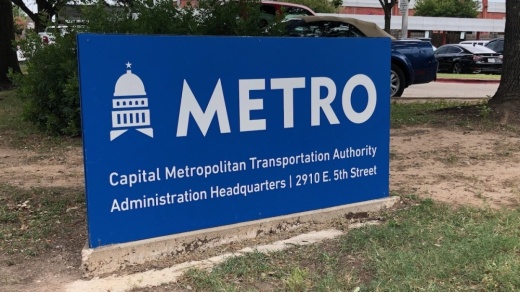The proposal drew criticism from community groups who say that Capital Metro should conduct additional research before moving forward.
Awais Azhar, a member of the Planning Our Communities leadership team, serves on the Capital Metro diversity, equity and inclusion committee. He said he needs to see data to convince him that a transit police force is necessary.
“It's a really big decision, and creating a whole new transit police, we've never had one—we've had security but that's different—but this would be a whole other department within Capital Metro,” Azhar said. “And I think there's a strong need to assess whether there's an actual need for it.”
A letter signed by the Austin Justice Coalition, Just Liberty, People United for Mobility Action and Planning Our Communities read, “Before taking action on the creation of a new department, Capital Metro should conduct a thorough, data-driven and equity-focused analysis of the need for a Capital Metro Transit Police Department, while engaging with key stakeholder groups, transit riders and community members.”
Capital Metro public safety survey
Capital Metro conducted a survey with 570 respondents in the spring of 2021 that found 80% of customers indicated that “security is good” and they “do not seem to fault CapMetro for safety issues.”
The survey also found that 63% of Capital Metro frontline staff “view security as needing improvement.”
“I think we have an imperative as a board to do everything we can as quickly as we can to protect our frontline personnel, and we've known for some time that we have put them in harm's way in many respects,” Capital Metro board chair Wade Cooper said.
The expanded public safety program has also seen support from union members, according to Capital Metro documents.
“I just wanted to speak in support of Capital Metro’s providing more protection for, one, the riding public, and for my bus operators and mechanics when we're out there,” said Brent Payne, president of the Austin chapter of the Amalgamated Transit Union, which represents Capital Metro employees.
A three-pronged approach
As a part of the program, transit police would serve as one prong of Capital Metro’s three-pronged approach to public safety. The other two components would include intervention specialists and public safety ambassadors.
The police would be armed and respond to escalated security threats. However, the overall public safety program would consist of more public safety ambassadors than police officers, said Gardner Tabon, Capital Metro chief security officer at a news conference Aug. 26.
Capital Metro hired a public safety ambassador supervisor, as well as 15 public safety ambassadors in the last year. The public transit agency envisions the position as one that will identify safety issues and communicate them to transit police and intervention specialists, who would receive social service training.
Capital Metro currently works with a rotation of more than 100 part-time armed police officers from the Austin Police Department for security, Tabon said.
Azhar said the Austin Police Department has made significant reforms over the past year, and it will be a challenge for Capital Metro to create a similarly robust public safety department.
“We were in the enviable position of not having a department and seeing what the public safety needs were, and then, even now, we have an opportunity to really set up something that is different and apart from what other cities have,” Azhar said.
The public safety program will now seek to work with a consultant to build out the new department, as well as a mechanism to oversee and audit the police force, a responsibility that Azhar said should be in a separate department.
Funding for the initiative is a part of the proposed $319.1 million budget that the Capital Metro board of directors plan to vote on during their next meeting Sept. 27.





